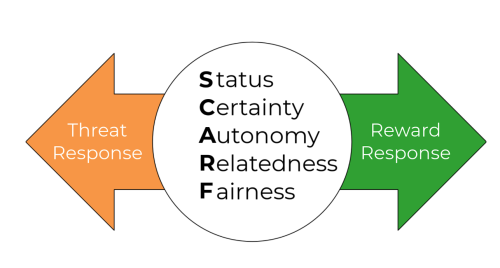
Assertiveness is being confident in the defence of an idea without being aggressive. It is important to stand up for what is important to us. However, practising assertiveness in the workplace can be difficult due to the power dynamics at play. This hesitation about speaking up can be challenging but not impossible.
How is Assertiveness Different?
There are two major behaviours that assertiveness is often conflated with due to how fine a line it can be to be assertive. These behaviours are aggressiveness and passive-aggressiveness. How these differ from assertiveness is highlighted below.
Assertiveness - Expressing your concerns and standing up for your point of view honestly whilst staying in control.
Aggressive - Disregarding others’ needs or feelings, weakening trust and mutual respect whilst fostering resentment.
Passive-Aggressive - Unaddressed, our feelings manifest through our behaviours, out of our control. Staying silent makes it hard for our own goals to be met.
What Can Stop Us from Being Assertive?
Assertiveness is a practised skill that needs to be honed to build confidence. Our lack of experience often comes from outside factors that lead us to believe there is something rude about being assertive. Study the list below and consider whether any of these affect your ability to assert yourself.
- Our sensibilities and values
- Cultural backgrounds
- The power imbalance between parties
- Potential risk factors such as relationships, employment and team efficacy
- Our belief that being assertive is too aggressive
Consider these factors and how they influence your behaviours. Are they causing you to act positively or limiting your growth?
A Three-Step Formula
Firstly, start with a short and simple statement on what you are standing up for:
- “When you interrupt me” or,
- “When you take credit for collaborative work”.
Next, Describe the negative effect this has had on you or the subject:
- “I am unable to contribute” or,
- “I am unable to highlight my contribution”.
Finally, end your statement by describing how it made you feel:
- “I feel marginalised” or,
- “I feel unappreciated”.
Putting this all together, you have a powerful statement “When you continually interrupt me during meetings, I don’t get a chance to voice my opinion, and I feel marginalised”.
Building Assertiveness Further
Use “I” Statements
Use statements that address how you feel rather than accusing someone else. For example, say, “I disagree”, rather than saying, “You’re wrong”.
- This keeps your message concise and personal.
- It is harder for others to disagree with how you feel, but they can easily disagree with your interpretation of them or the situation.
Avoid Using Qualifiers
- Phrases such as “I’m really sorry, but…” or “Maybe it’s just me, but…” aren’t helpful when trying to deliver a strong message.
- Get straight to the point and say, “I’m uncomfortable with (x)”.
Qualifiers are often used to soften the impact of a message. However, when being assertive, they can undercut your communications before you’ve begun.
Understand they are Working from their own Perspective
It is common to rely too heavily on our perspective and apply that lens of thinking to others. Even in familiar situations, we can struggle to understand or speculate another’s emotions or line of thinking. Try to think from their perspective before initiating the conversation:
- Why would they challenge your assertiveness if it is honest?
- Are they aware they have wronged you?
- Do they have all the information that you’re working with?









